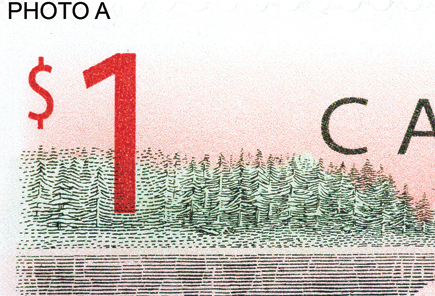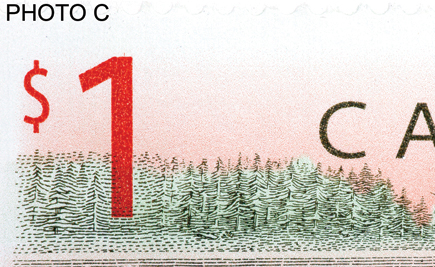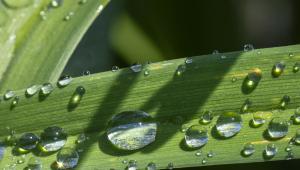Tokina’s AT-X 100mm f/2.8 PRO D Macro Lens; Close-Ups For Digital And Film Page 2
Lens Evaluation
The technical factors ensure great ease and convenience of use, but how does
this lens perform in terms of image quality in macro photography? Remarkably
well, actually, despite the fact that it does not contain any low dispersion
or aspherical elements. Images made with extreme close focusing--at any
aperture from f/5.6-f/11--are razor sharp, with the most intricate detail
crisply defined. Contrast is snappy, too. I found no need to stop down to f/11
for high edge sharpness as with some other
macro lenses.
By f/16 and f/22, center sharpness is still high, but corner sharpness does
begin to suffer, as with many lenses, due to diffraction: the bending of light
rays as they enter a very small aperture. However, the greater depth of field
at tiny apertures produces an impression of higher sharpness, because all parts
of a three-dimensional subject can be within the range of sharp focus. Hence,
I certainly did not avoid shooting at f/16 when necessary for extreme close-ups
of a praying mantis cavorting on a gerbera daisy blossom.
At the more typical 6 ft to infinity distances, image quality is excellent at
all apertures from f/4-f/11; this consistency is a sign of well-designed optics.
Even at maximum aperture, central sharpness is high, an important consideration
unless the primary subject is small and located near a corner of the frame.
Final Assessment
Regardless of the great optical performance of this macro lens, technical proficiency
is a prerequisite for sharp images at high magnification. I made over 250 images
with the Tokina AT-X 100mm f/2.8 PRO D and feel it is suitable for both serious
nature photography and as a conventional short telephoto. This multi-platform
lens is a very fine performer. Quite affordable for a 100mm macro with the latest
multilayered coating technology, it offers exceptional value. Aside from the
high image quality, it's mechanically solid and likely to provide long-term
reliability even during extensive field use.
 |
|
 |
|
|
|
|
Magnification Issues: 35mm Vs. Digital "Macro" Photography
Owners of digital SLRs may wonder about the effect produced by this 100mm macro
lens when used on a camera with a sensor that's smaller than the 35mm
film frame. That's understandable, because the "focal length magnification"
factor is a
well-known concept. Does the longer equivalent focal length produce greater
than 1x magnification when the lens is focused to 11.8"? And can 1x magnification
be achieved without moving so close to the subject? Finally, what is the difference
in depth of field? These are important issues, well worth addressing, in a step
by step manner.
The Basic Concept
When a lens of any focal length is used on a camera with a sensor smaller than
the 36x24mm standard, it produces an effect that simulates a longer lens. The
factor varies depending on the exact size of the sensor. Most affordable digital
SLRs employ a CCD or CMOS chip that falls into the so-called APS-C format. The
exact size varies slightly depending on the brand, and sometimes, on the specific
model within a brand.
For example, a Canon EOS 20D employs a 22.5x15mm sensor while a Nikon D70 incorporates
a 23.7x15.6mm sensor. Consequently, the "focal length magnification"
factor varies from 1.5x (Nikon, Konica Minolta's Maxxum, Pentax) to 1.6x
(Canon) and to 1.7x (Sigma digital SLRs). According to a simplified definition
of the factor, a multi-platform 500mm telephoto, for example, becomes equivalent
to a 750mm, 800mm, or 850mm focal length lens. That's a compelling explanation
because of the effect that we see in the viewfinder. The focal length does seem
to be longer in comparison to the effect that we get in 35mm photography because
the subject appears larger in the frame.
This effect occurs because only a portion of the large image circle projected
by the lens is recorded by a small sensor. In other words, the field of view--or
"picture angle" in Nikon terminology--is being cropped, and
that's reflected in the viewfinder. The subject appears larger because
less of the scene is included in the image area. That effect is not produced
by higher magnification but the subject does appear larger; hence, we can refer
to this effect as greater "apparent magnification."
Macro Lens Specifics
Moving back to specifics about extreme close-up photography, let's examine
how field of view crop affects the images that we make. Let's say that
you have mounted a Tokina AT-X 100mm f/2.8 PRO D macro lens on a 35mm Nikon
F100 loaded with slide film. Subsequently, you'll mount the same lens
on a digital Nikon D70. Using each camera in turn, you move in very close to
a cooperative bee on a small blossom until you reach the 11.8" minimum
focusing distance.
After processing the film and downloading the digital image to a computer, you'll
be able to make the following observations:
· In the 35mm slide, the bee is exactly bee-size on the film frame, because
the lens has provided 1x magnification, or a 1:1 magnification ratio.
· When the slide is projected, the bee appears to be massive, filling
an entire wall. That's simply due to the magnification produced by the
projector lens.
· In the digital image, the field of view is narrower because the camera's
sensor is smaller than a 35mm film frame. Less of the surrounding vegetation
is included in the image (reducing distraction caused by extraneous elements)
and the bee appears much larger in the frame.
· You can achieve the same effect with the 35mm slide: a larger bee. Simply
make (or order) a high-resolution scan of the film frame and crop the digital
image until the bee appears to be larger and less of the surroundings are included.
The same concepts would apply if you substituted a digital SLR with full-frame
(36x24mm) sensor for the 35mm camera in the earlier example. Only a few current
digital SLRs employ the large sensor: the 12-megapixel Canon EOS 5D and the
16-megapixel EOS-1Ds Mark II. If you crop the digital image made by the full-frame
sensor camera, the bee would appear to be just as large as it does in the image
made with the 6-megapixel Nikon D70. Sure, you would be discarding pixels, but
the cropped image would still exhibit high resolution because you started with
far more pixels.
Conclusion
If using a digital SLR with a small sensor, you might want to take a different
approach in extreme close-up nature photography. Instead of making an image
where an insect is extra large in the frame--by moving in very close to
the subject--shoot from a slightly greater distance. You can move back
a bit, increasing the camera-to-subject distance by about 50 percent and still
get the equivalent of 1x apparent magnification, with a few bonuses. Because
you're not as close to the subject, there's less risk of spooking
an insect or casting a shadow in the composition. As well, the extra working
space allows for more room to position a small reflector or off-camera flash
unit.
That leads to another benefit of using a digital SLR with a small sensor. Because
you do not need to move in as close to the subject for high apparent magnification,
the range of acceptably sharp focus will be greater. If you extend the camera-to-subject
distance by 50 percent, the depth of field will increase by 50 percent.
That's a real benefit in macro photography with three-dimensional subjects,
increasing the odds that the entire subject will appear sharply focused in the
final image. It also reduces the need to use a very small aperture, such as
f/22. Hence, the lens will produce better image quality while shutter speeds
will be faster, reducing the risk of blur from subject movement.
And in the final analysis, information of that type is more valuable than details
about technical differences between the various camera formats. Unless you plan
to use two entirely different types of cameras with the same lens, simply take
advantage of the characteristics that your own SLR offers. Instead of worrying
about comparable focal lengths or magnification ratios, do your best to make
extreme close-ups with great technical quality and high visual appeal.
Technical Specifications
Focal Length: 100mm
Maximum Aperture: f/2.8
Minimum Aperture: f/32
Lens Construction: Nine elements in eight groups
Focus Limiter: Limits focus to 1.28 ft to infinity
Diaphragm Blades: Nine to render specular highlights as circular
at small apertures
Minimum Focusing Distance: 11.8" (30cm)
Maximum Magnification: 1x (1:1)
Filter Size: 55mm
Lens Hood: Bayonet type; included
Dimensions: 2.9x3.74"
Weight: 19 oz (540g)
AF Mounts: Canon EOS and Nikon AF
Street Price: $299
For more information, contact THK Photo Products, Inc., 2360 Mira Mar Ave.,
Long Beach, CA 90815; (800)
421-1141, (562) 494-9575; www.thkphoto.com.
A long-time "Shutterbug" contributor, freelance stock photographer
Peter K. Burian is the author of "Mastering Digital Photography and Imaging"
(Sybex) and a digital photo course instructor with www.betterphoto.com.
- Log in or register to post comments


































